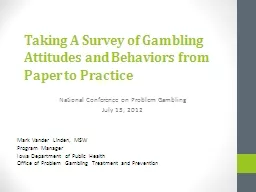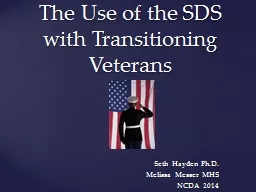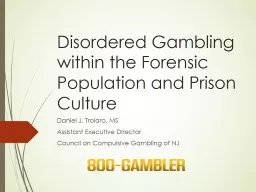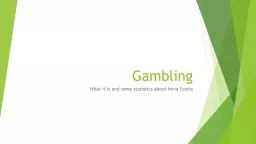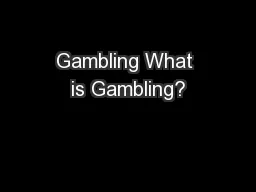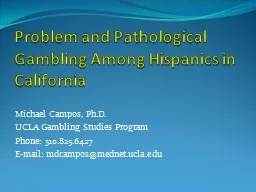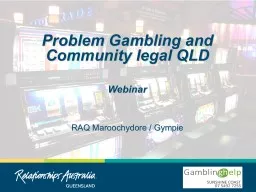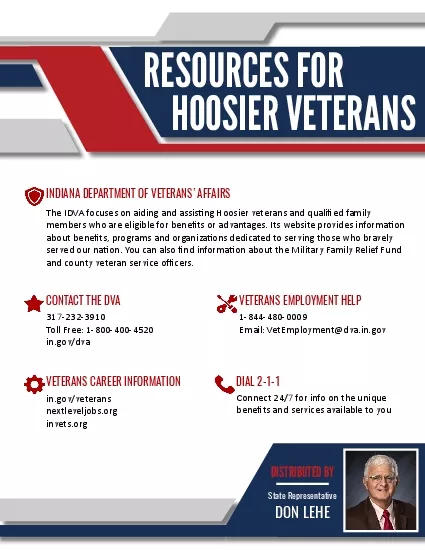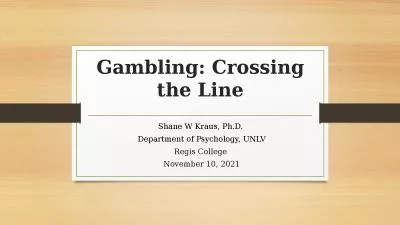PPT-A Hidden Problem: Examining Problem Gambling Among US Military Veterans
Author : calandra-battersby | Published Date : 2019-12-18
A Hidden Problem Examining Problem Gambling Among US Military Veterans Shane W Kraus PhD VISN 1 New England MIRECC University of Massachusetts Medical School Division
Presentation Embed Code
Download Presentation
Download Presentation The PPT/PDF document "A Hidden Problem: Examining Problem Gamb..." is the property of its rightful owner. Permission is granted to download and print the materials on this website for personal, non-commercial use only, and to display it on your personal computer provided you do not modify the materials and that you retain all copyright notices contained in the materials. By downloading content from our website, you accept the terms of this agreement.
A Hidden Problem: Examining Problem Gambling Among US Military Veterans: Transcript
Download Rules Of Document
"A Hidden Problem: Examining Problem Gambling Among US Military Veterans"The content belongs to its owner. You may download and print it for personal use, without modification, and keep all copyright notices. By downloading, you agree to these terms.
Related Documents


